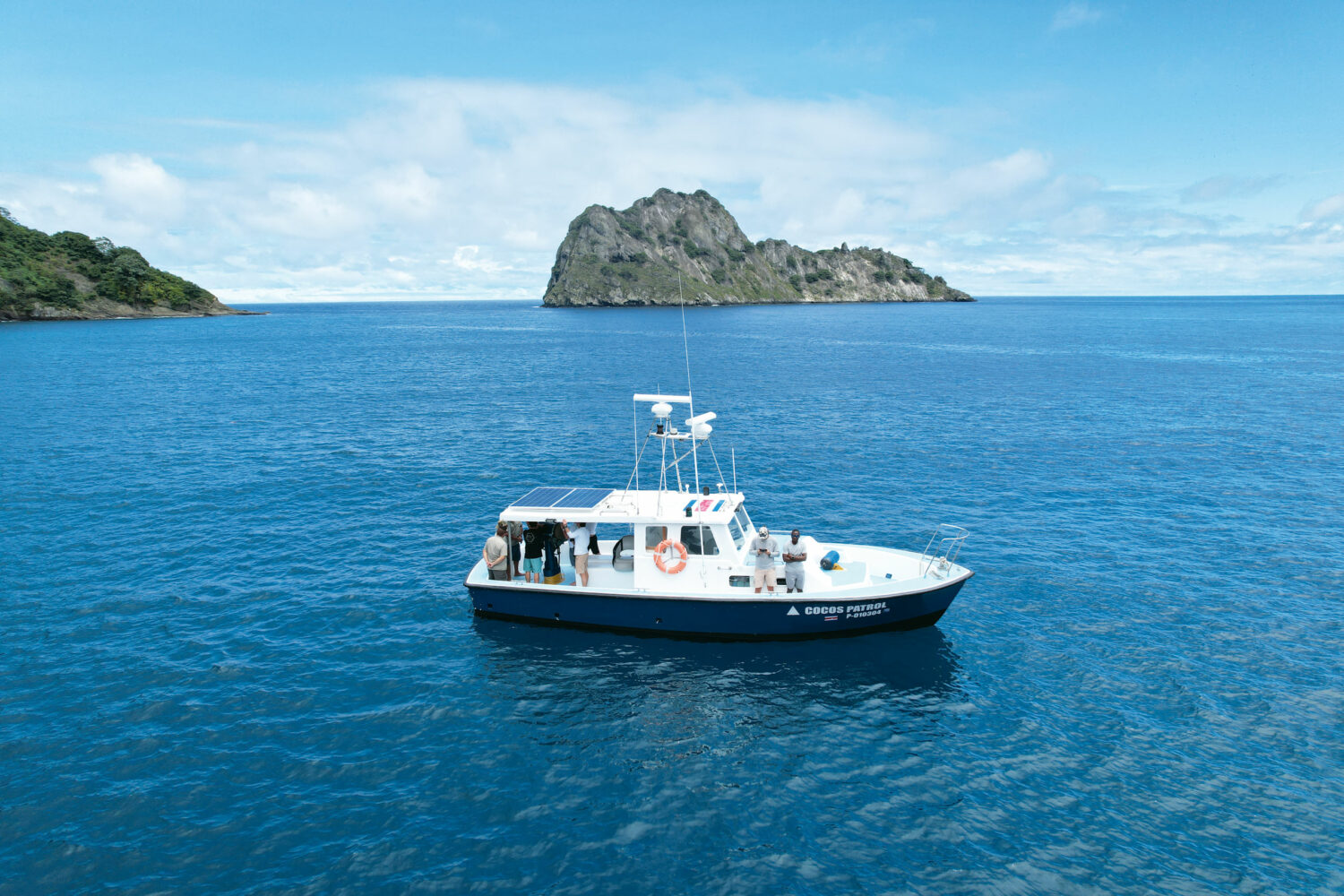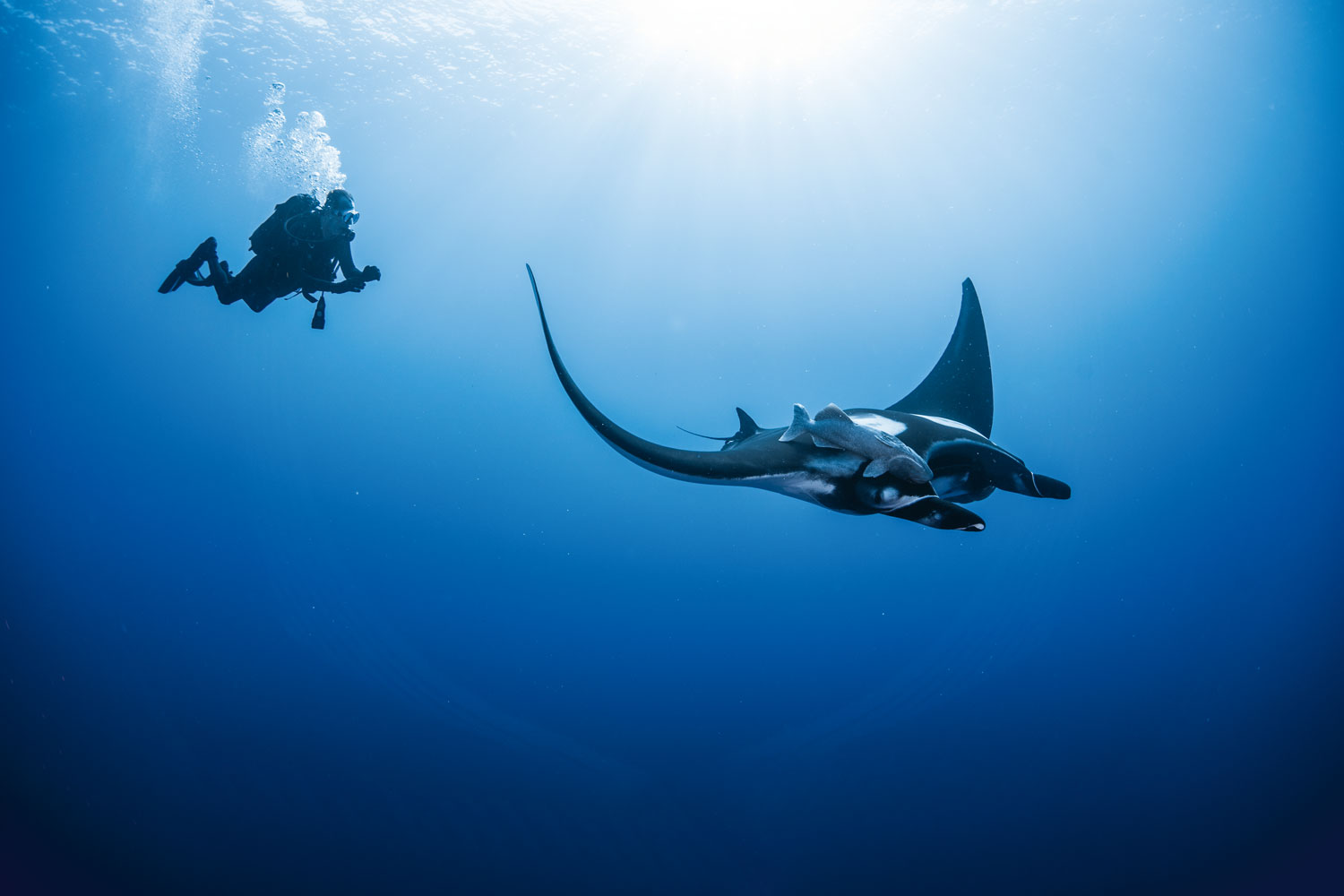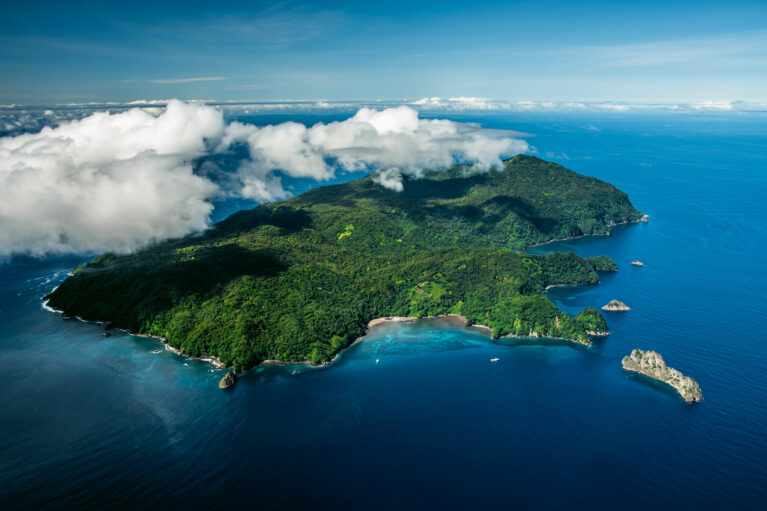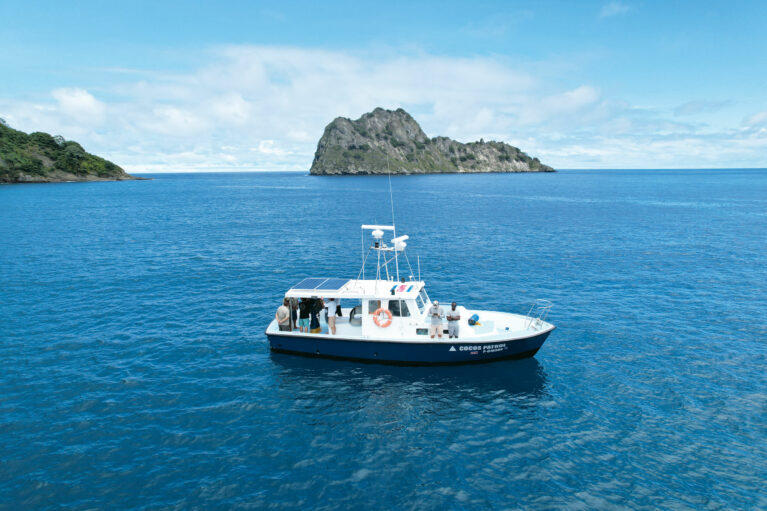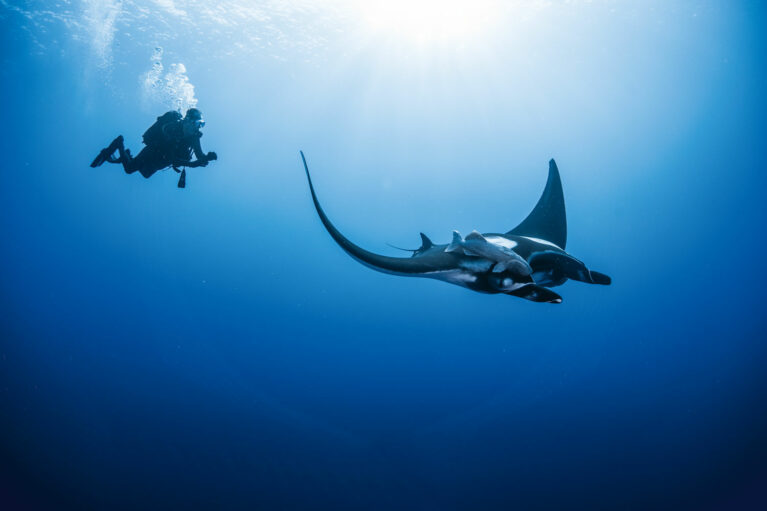In Conversation
Save Our Seas Foundation founder, His Excellency Abdulmohsen Abdulmalik Al-Sheikh, sat down with Pippa Ehrlich to reflect on 20 years of ocean conservation
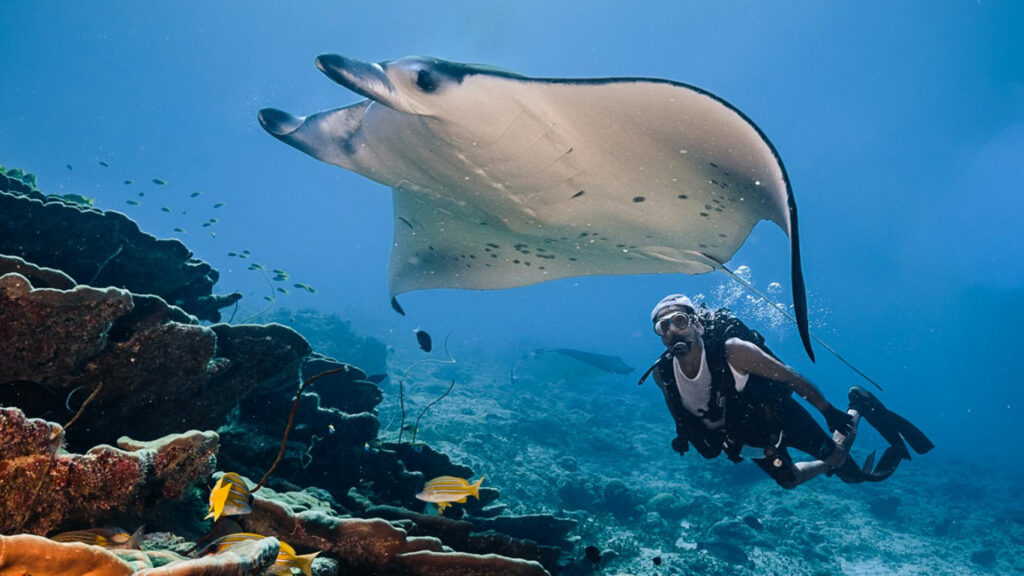
HIS EXCELLENCY ABDULMOHSEN ABDULMALIK AL-SHEIKH FORMALLY STARTED THE SAVE OUR SEAS FOUNDATION (SOSF) IN 2003 BUT HAD BEEN EXPLORING OUR OCEANS AND SUPPORTING MARINE CONSERVATION PROJECTS LONG BEFORE THAT. HERE, IN CONVERSATION WITH PIPPA EHRLICH, HIS EXCELLENCY TALKS ABOUT HOW HE FELL IN LOVE WITH SHARKS AND THEN SET ABOUT HELPING THE RECOVERY OF SHARK POPULATIONS AROUND THE WORLD.
What are your earliest memories of the natural world?
I remember being fascinated by nature, even when I was very young. I was born in a village in the Arabian Desert, which was dry and arid, but still found the landscape to be dynamic and interesting. When I was about 12 years old, I saw the Red Sea coastline for the first time. I remember looking at the water in awe. There were many colourful fish swimming in the shallow clear waters, and I could see the deeper dark blue water beyond the coral reef’s edge.
How did you feel the first time you entered the ocean?
I was mesmerised by the ocean: the clarity of the water, the vivid colours and the diversity of fish. I was about 13 years old when I first started snorkelling. I immediately loved being underwater – it felt more natural for me to be submerged in water than to be on land. The Red Sea was vibrant and teeming with life. You can’t begin to imagine the dramatic transition from vast sand dunes to clear blue water filled with a multitude of life – it was like being in an entirely different world!
What was your impression of sharks before you saw one for the first time?
When I was younger, little was known about shark behaviour. People weren’t really diving or snorkelling with sharks. Popular media unfortunately sensationalised shark attacks and created a lot of unnecessary fear and anxiety. I’ll always remember the first time I saw a grey reef shark whilst diving in the Red Sea. I was exhilarated by the experience but at the same time a little nervous. I recall hiding behind a coral head waiting for the shark to swim past, hoping it wouldn’t come near me. It goes to show how misconceptions play on one’s mind because, in reality, the grey reef shark was probably more concerned about me.
Silky sharks, each with their unique personality, were early characters in the Founder’s ocean journey. Photo © Simon Hilbourne
When did your perceptions shift?
After spending a lot of time in the ocean and many hours diving with sharks, I could tell that they didn’t see me as food. Sharks want to eat fish, marine mammals and other sharks. The more I watched them, the more I realised how intelligent and highly specialised they are.
When did your understanding transform into a love for sharks?
I spent many hours in the Red Sea, diving with the same silky sharks over several years.
I thought about nothing else whilst with them, and every dive was different, every encounter truly exhilarating. It may seem surreal to anyone unfamiliar with sharks but I gained an understanding and formed a relationship with these sharks. Over time they revealed their different personalities, each one behaving slightly differently from the next, and I fell in love with them, not only as a species, but as individuals too.
Was there some specific event that made you realise, ‘Wow, these animals need help’?
In 1998, I returned to the remote Revillagigedo islands situated 300 miles off the West Coast of Mexico on a diving expedition. Whilst descending to a rocky pinnacle off the island of San Benedicto, we came across a discarded drift net snagged on the rocks. Numerous sharks and rays had already been entangled in the netting and a young bottlenose dolphin had drowned. An illegal fishing boat had abandoned the fishing net the day before. We did our very best to remove all the netting from the rocks so that no more animals would become entangled. We didn’t see any living sharks for the two days we were diving there. It was a very sad and sombre experience to witness such a dramatic decline from the abundant life we had encountered at the same location only a year before.
The local scientists who joined us during that expedition explained how critical these islands were for the sharks’ recovery, and the immense fishing pressure the marine park was under. The entire experience was a real turning point for me.
I believe this is your first interview for the SOSF magazine, why is that?
The Save Our Seas Foundation is all about providing the marine environment with a voice and giving support to the people who are working to protect it. While I’m deeply passionate about the Foundation and its mission, I prefer to facilitate that work and enable our project leaders and their work to take centre stage.
Over the past 20 years, what do you consider to be the best achievements for the Foundation?
Once when diving around Cocos Island in 2000, situated far off the coast of Costa Rica, I spent time with the local park rangers. They explained that fishing boats were illegally setting long lines within the marine protected area. They felt helpless as they didn’t have a boat to be able to stop these illegal fishing practices. The Save Our Seas Foundation supplied a fast patrol boat later that year, allowing the park rangers to patrol and protect the marine park.
In 2020 I returned to Cocos Island. The park rangers I met 20 years earlier were still there, using the same boat to patrol the marine reserve. They explained how invaluable the boat had been in protecting the island’s marine life. This highlighted that with the right tools and motivation, the Save Our Seas Foundation can make a huge difference. Cocos Island is a magical place – the marine life there is extraordinary. To be able to do something simple, yet so effective, was both touching and empowering for me.
On a larger scale, the Save Our Seas Foundation has now built a global network of project leaders, supporting almost 500 projects in about 90 countries. We’re all working together for a brighter future for sharks and rays. With the most recent CITES [Convention on International Trade in Endangered Species] meeting, 90 per cent of the shark species targeted by the fin trade are now protected from international trade. I feel so proud that the Save Our Seas Foundation and the scientists we support played an important role in this achievement.
Another valuable success has been advances in marine education. The majority of people no longer think of sharks as terrifying creatures. There’s now far more understanding, appreciation and compassion for them than before. Sharks play a vital role in the world’s oceans and, increasingly, people are realising how threatened they are and in need of protection.
You place a lot of emphasis on nurturing young people through education, but also on working with young scientists. What was your thinking behind that?
It’s very important to me to nurture the next generation of leaders in shark conservation. Over the past 20 years, helping young marine scientists to achieve their goals has allowed them to develop and become pioneers in marine conservation today. Many have made huge differences for sharks around the world. A good example of this is Alison Kock, one of our first grantees and at the time a PhD student from South Africa. We supported her research on white shark behaviour in False Bay. She now works for the South African Government as a lead marine biologist for the National Parks Department, helping to manage and monitor the effectiveness of Marine Protected Areas along the South African coastline.
What is your vision for D’Arros and St Joseph and why is that place special to you?
That place is one of the last jewels left in this world, because of all the marine life there. My vision is to create a world-class field station both for children’s education and shark and ray research. It’s important to me that we continue to protect the marine reserve that has finally been declared there.
More importantly, we want it to be a place for sharing the magic of the wilderness and ocean. We’re often so completely disconnected from nature and I think that as humans there’s a part of us that’s still very wild, and will always yearn to be in those places. We’re already running educational field camps for young Seychellois. The students work alongside our scientists collecting data in the field. They learn about the marine environment and experience nature for themselves. They then leave the camps understanding the true value and benefit of creating marine reserves. This is what the whole planet should look like and it’s something that could be done in other parts of the world too. Even with a small marine reserve, you can make a huge difference for a local community.
And what about your vision for the Foundation in general?
My vision for the Foundation is to make a difference where I can and to have a positive influence on protecting the ocean and the future of human beings. This planet has given us so much in our lifetime, and this is how I can give back in my own small and humble way.
A budding freediver, newly minted from the D’Arros Experience, reaches for a reef at D’Arros Island. Photo by Dillys Pouponeau | © Save our Seas Foundation


